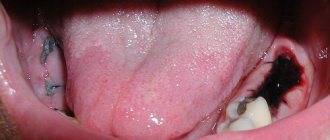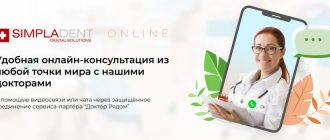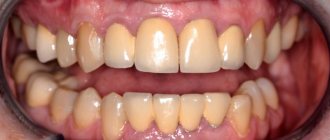Parents always have a number of concerns regarding the health of their children. For example, it is important to know how a mother herself can correctly and quickly pull out a loose baby lower or upper, front or chewing tooth, fang or incisor, at home so that it doesn’t hurt, the better with dental floss or sewing thread, or without them, just with your hands, Is it even possible to do this yourself, how to help you heal faster and survive the recovery period on your own and painlessly, without complications and at home.
When they start to fall out
This phenomenon can be encountered when the child turns 5-6 years old. It occurs due to the fact that the jaws begin to grow. It is completely painless for most children, due to the fact that during the growth of the radical replacement, the roots of baby teeth are reabsorbed. They become mobile and then fall out. This is ideal.
There are cases when improper formation is observed, especially of premolars, and very rarely of incisors and canines. Due to the violation, resorption does not occur on time. Careful removal is required so that they can grow healthy and even in the future.
Lasts up to 10-12 years, depending on the individual characteristics of the body. Interestingly, in girls it begins earlier and proceeds much easier and faster than in boys.
A child is afraid to have a tooth removed, what to do?
A child is afraid to have a tooth removed, what to do?
Our children are a mirror of our emotions, a reflection of our hopes, fears, and experiences. In them we put the feelings that we experience at different moments in life. The fear of going to the doctor, which you developed in childhood, will pass on to your child if you don’t calm yourself down at the right moment and tell yourself: “everything will be fine, we can handle it, it’s not scary.” If you instill in your child from childhood a feeling of safety in the hands of a doctor, every trip will be a joy for both you and him. Dental treatment will be a fun game, and daily oral care will be a fun and favorite activity.
Now let's talk about the removal of baby teeth, fears and questions associated with this operation.
Unfortunately, sometimes baby teeth need to be removed, and there are several absolute indications for their removal, these are:
- Eruption of permanent teeth, without loss of primary teeth.
- Traumatic lesions in which there is a fracture or damage to the dental apparatus that is impossible for therapeutic restoration.
- Periodontitis of a baby tooth, that is, the penetration of inflammation from the tooth tissue into the bone tissue. Most often, this condition is characterized by the presence of pain or fistulous tract in the gum area of the tooth. It is also possible that the infectious process will immediately develop into swelling of the buccal area; this condition requires immediate intervention.
- Mobility of a baby tooth due to the resorption of its roots during physiological change.
Accordingly, there are various options for performing the operation of removing baby teeth, depending on the picture with which you came. In turn, for the youngest children who need to give a tooth to the tooth fairy, it is sometimes difficult to form an idea of the necessity and painlessness of the intervention; in this case, if there are indications and no contraindications, we are talking about sanitation of the oral cavity either under sedation or in a state of medication sleep. If there are no indications for these interventions, then removal is carried out in the usual way.
You can read more about each type of treatment in the articles on our website dedicated directly to these manipulations.
What does the doctor look for when planning the nature of the intervention?
First of all, we take into account the health status, age and character of our patient. We carefully collect anamnesis, find out the presence or absence of allergic reactions in the child, after which, after conducting a direct examination of the baby’s oral cavity, we begin to explain our treatment plan to parents and relatives.
What are the possible options for tooth extraction surgery?
Let's start with more acute and unusual situations, which most often cause questions from parents.
All our actions must be minimally traumatic and painless for the child, therefore the presence of neurological disorders, allergic reactions to local anesthetics and the duration of the necessary treatment, we define as indications for treatment in a state of medicinal sleep. It is also very important to understand that there are not only general but also local indications for surgery under anesthesia:
- The presence of a fistula tract is a sign of the transition of the inflammatory process from the hard tissues of the tooth to the bone tissue. Usually parents bring their children when they notice a fistulous tract on the gum, next to the causative tooth. At the same time, you may notice that your child complains of pain when biting, when brushing teeth, or food getting stuck.
- The appearance of swelling of the cheek, infraorbital area, pain when touching this area in the baby. We must remember that a rise in temperature, deterioration of condition, lethargy, poor appetite is an alarming sign: urgent surgical intervention is necessary. The rate of inflammation in children is much faster than in adults, and the health of the baby is in your hands.
Why do these conditions require removal not only under local, but also general anesthesia?
In the maxillofacial area, as in any other system of your body, there is an acid-base environment maintained by microelements, hormones, and other substances that create a state of homeostasis. Gradually, in the area of inflammation, due to the displacement and disruption of normal acid-base reactions, a predominance appears in the direction of the acidic environment. At the same time, local anesthetics used in dentistry are characterized by an alkaline environment. As you already understood, when an anesthetic is introduced into the inflamed area, it is neutralized and suppressed by an acidic environment. Accordingly, to avoid pain during surgery, to achieve adequate and complete analgesia, it is necessary to combine general and local analgesia methods.
Most often, this is how the chewing molars of milk teeth are lost, caries spreads lower and lower in the tissues of the tooth, ending with inflammation in the form of periodontitis of milk teeth. Since the roots of these teeth are intact, that is, they have not yet undergone resorption due to age-related changes to permanent ones, their removal may require a little more time from the doctor. Technically, it is staged, it resembles removal in an adult; all stages of this procedure will be discussed further.
Early loss will require further production of a prophylactic replacement structure on the adjacent teeth, to preserve the chewing function and avoid displacement of the adjacent teeth to the place of the removed one.
It’s another matter when we need to treat or remove teeth without inflammatory causes in children. There are two possible scenarios here:
- Option. The child sits well in the dentist’s chair, is not afraid, and allows all the manipulations to be carried out. In this case, we work under local anesthesia and calmly go to the store for ice cream in half an hour.
- Option. These are children who are tense or unfamiliar with the dentist’s chair. In such cases, it is recommended to carry out removal under nitrous oxide, which helps relieve anxiety and fear, helps the child relax and not be distracted by the doctor’s manipulations. In turn, the visit will not leave fear and anxiety in the heart of our little patient and will help create a positive picture of the perception of dental treatment. And yes, of course, we definitely take the baby for ice cream in this case too.
Now let’s talk a little more about what actions we perform to give our baby tooth to the tooth fairy.
The procedure for removing a baby tooth itself is a sequence of basic steps familiar to everyone. First of all, after getting to know each other and determining the scope of our activities, we begin pain relief; it is performed taking into account the condition of your child and his health.
The worst thing at this stage, most often, ends! After the period necessary for the anesthetic to take effect, we separate the gum tissue from the tooth itself and begin luxation movements, in other words, rock it, after which we take out the baby tooth and check its integrity. Inspection of the hole is mandatory; we visually check the formed hole and let the baby bite on a sterile gauze ball. For 10 minutes, the child lies calmly, rests, we give him the tooth, show him and tell him about the milk fairy and her wonderful gifts.
All! Your baby is the biggest hero, and not because he endured pain and let you hold him, but because he sat quietly and was a real smart girl.
Now that you and I, dear parents, have understood all the intricacies of the process, calmed ourselves and our grandparents, we can talk about the psychological preparation of the child for the trip to the doctor itself. Your main task is:
- You can and should set your child up for positive emotions at home; tell a fairy tale about how the tooth fairy loves baby teeth, that she, like Santa Claus, has helpers everywhere and they make sure that for every lost tooth the child receives a gift.
- Prepare the child for the situation in the doctor’s office, tell him that he has a magic chair that he can ride on, special sticks that, like an elephant, collect water. We, in turn, will always offer your child his favorite cartoons during the treatment process and create the most favorable atmosphere.
At the end of treatment, your baby always deserves a reward. Everyone enjoys receiving gifts, knowing that for your merits you will receive a pleasant prize, be it a promotion at work, or a gift under the pillow from the tooth fairy for a child. Therefore, of course, the final stage of your preparation will be a reward for your hero.
For clarification and clarity of all that has been said, we invite you to consider several clinical cases from our practice.
Should I rush to delete it?
Parents are interested not only in how to correctly pull out a child’s tooth, but also when it can be done. A clear answer to the question is not recommended without medical indications. Because the rudiments have not yet fully formed. They will not erupt for a long time. The absence of at least one element of the dentition leads to the fact that the rest begin to slide, taking up free space, which leads to an incorrect bite. Those that should be in a specific place will not come out before their due date. This means that when the time comes, they simply will have nowhere to grow.
Among the dangerous consequences of this procedure:
- the appearance of painful and unpleasant sensations during teething;
- change in diction, habit of burring;
- incorrect jaw structure;
- problems with digesting food.
Therefore, it is better to refrain from deleting in advance if there is no reason for this.
Complications after surgery
Do not give in to panic and call the ambulance service at the slightest ailment of the baby. Some consequences of tooth extraction do not harm children's health in any way. The following symptoms are considered normal:
- The child’s gums ache after tooth extraction - apply ice, this will reduce the discomfort.
- After tooth extraction, the child has swelling - after the third day it will begin to subside; ice also helps eliminate the discomfort.
- A swollen cheek after tooth extraction in a child indicates a slight inflammatory process, which will go away on its own after some time.
- Light bleeding in a child after tooth extraction should also not cause concern; even the next day the saliva may be slightly reddish.
- A low temperature after tooth extraction in a child is the result of the child’s worries and nervous overstrain; when he calms down, the temperature will drop.
Indications
Among the cases when the doctor may insist that the milk needs to be vomited:
- advanced caries, which can cause infection in the oral cavity;
- cyst;
- a loose element of the dentition injures the gums, which leads to inflammation;
- long-term spontaneous loss;
- chip, crack or other injury;
- orthodontist indications;
- phlegmon;
- periodontitis;
- fistula;
- sinusitis.
If there are such reasons, it is necessary to remove the traumatic element ahead of schedule so that it does not lead to serious diseases of the oral cavity.
Tooth extraction in children: indications
At the age of five or six years, the process of replacing baby teeth with permanent ones begins.
Unfortunately, many parents mistakenly believe that there is no need to treat baby teeth. This often causes the development of pathologies that ultimately lead to the need to completely remove the tooth. Here are some indications for tooth extraction in children:
- Presence of advanced caries. If caries has destroyed a tooth so much that it is not possible to restore it, the doctor, as a rule, recommends removing the tooth;
- Development of a cyst at the base of the tooth. A baby tooth injures surrounding tissues and causes inflammation;
- Difficulty with baby tooth loss;
- The presence of serious damage - chips, microtraumas;
- Referral from an orthodontist;
- The presence of periodontitis, sinusitis or fistula on the gums;
- Additional, super-complex teeth.
Permanent teeth in children are removed quite rarely, usually due to advanced caries and its complications. In addition, their removal is recommended in the following cases:
- The presence of an unerupted molar for which there is no space;
- Severe forms of periodontal disease;
- Serious injuries to permanent teeth.
Is it possible to pull out baby teeth yourself: when is it allowed?
You can help your child yourself only in a few cases. The main thing is that everything has its time. There are elements of the dentition that fall out naturally at the age of 5-8, or those that children lose closer to adolescence. Parents need to know about the location and timing of each one. If a loose element is about to fall out in time, you can help it, and if not, consult a doctor.
You should not run to the doctor if the second row appears. This sight is unaesthetic and often causes horror and an urgent visit to the dentist. This process occurs due to the fact that children have an excess of beneficial microelements in the body; accordingly, the formation of new ones occurs faster than the resorption of milk roots. Removal is not required; after timely loss, the root one will take its place. If this does not happen, braces may be available to help.
How to properly prepare a child for tooth extraction in pediatric dentistry?
- A brave child is one who is familiar with the place and situation, so parents need to try to ensure that the first visit to the dental clinic is not associated with treatment, much less tooth extraction and pain. Go with your child to the dental clinic for preventive examinations, children's parties, which we regularly hold, take your child with you when you go to have your teeth treated.
- A good, cozy clinic is not a dream today, but an accessible reality. Go to the clinic yourself without your child, meet the doctor. The atmosphere should be calm, the space should be thought out for small patients. And, of course, no screaming or crying behind office doors.
- Never frighten your child with the dentist or doctors in general, and do not be afraid of them yourself - children subtly sense the mood of their parents.
- Ask your doctor whether it is better to leave your child alone or be present during the procedure. NEVER leave your child alone at the dentist's office if this is their first appointment with the dentist.
- Do not shame your child in the dentist's chair, do not blackmail him with a gift or threaten him with punishment. Introduce him to the doctor and help establish contact between them, using the child’s natural curiosity - he should be interested, not scared.
Possible complications
An increase in temperature, even a slight one, indicates the development of an infectious-inflammatory process, and therefore requires urgent medical attention.
Other possible hazards include:
- change in bite;
- speech defects;
- decreased chewing function;
- prolonged bleeding from the socket, wound infection;
- pain in the area of removal;
- general weakness, hyperthermia.
Treatment of complications is very important. They can lead to dangerous consequences, including sepsis. If persistent hemorrhage, the presence of pus, severe pain, or fever are detected, it is necessary to urgently consult a specialist.
The wound will heal
During the natural process, when an old tooth falls out, a molar very easily erupts in place of soft, non-healed tissues. In case of mechanical intervention and tightening of the wound, a scar appears, through which it will be very difficult to break through. This will lead to pain and possible abnormal growth of the new tooth.
Damage to the primordia
If the technique is violated during removal, the growing ones can be damaged. Unformed tissue is very sensitive to mechanical stress, which can result in significant problems in the future. If you decide that you are definitely pulling out a child’s tooth at home, you should be prepared for:
- curvature, irregular formation;
- in places of damage to the top layer - the formation of caries;
- darkening of the enamel;
- displacement.
Therefore, it is necessary to resort to such intervention only when indicated.
The bite is disturbed
The most common problem that occurs when pulling out incorrectly is displacement. Associatively, you can imagine it like this:
- Dairy is a definite benchmark for growth.
- The root one rests on the roots and strives upward.
- After mechanical impact, the direction is lost, which leads to the fact that the dentition moves. Correction with braces may be required.
This is only one of the possible development options. If you remove them too early, the remaining ones will try to move into the free space. In this situation, there will simply be no room for the new one to erupt; it may come out sideways or second row, after which a lengthy adjustment will be required.
Overload of the masticatory apparatus
Each incisor, canine, molar or premolar has its own function for tearing and processing food. When one of the structural elements of the jaw is missing, the load is redistributed. Due to the fact that the remaining teeth are not designed for it, they are damaged and deformed. There is a possibility of tooth decay, displacement, gum disease and many other problems in the future.
Dangers of Home Removal
There are enough of them to make a rational choice in favor of professional dentists:
- there is a high risk of infection, because introducing dirt and infection into the hole will lead to suppuration;
- damage to molar primordia can cause damage to adult teeth;
- when tying with thread and other improvised means, the gums are often injured;
- displacement of the dentition, changes in the bite, subsequently problems with digestion and diction.
It is better to trust the experience of professionals than to risk the health of the child.
Contraindications for removal - when the doctor refuses to admit
- diseases of the central nervous system;
- exacerbation of chronic diseases;
- heat;
- viral and infectious diseases – whooping cough, ARVI, influenza, mononucleosis;
- inflammatory processes in the oral cavity;
- neoplasm near the root.
How to make it fall out yourself
The best and painless option in all respects is the natural process of change. However, it happens that the milk begins to wobble long before it falls out, which brings a lot of discomfort to children and worries parents. There are several ways to speed up spontaneous loss without causing harm.
Tongue loosening
Children are often told not to lick a loose tooth. There is an established myth that new ones may not grow evenly. This statement is completely false. When talking, eating, we constantly touch our teeth. When changing, this is necessary so that the loss occurs faster.
Do not be too zealous and press with your tongue, applying force. Light loosening will be beneficial and will help develop the gums. This should not be allowed if the dairy is not yet very wobbly. When the replacement process just begins, you need to wait the time necessary for root resorption. Otherwise, you can damage soft tissues or the rudiment and cause an infection.
We resort to using our fingers
After watching a video of children having their teeth pulled out at home, many parents decide to repeat what is not the safest and most hygienic option. The hands contain a huge amount of bacteria that will be transferred to the oral cavity. You can miscalculate the force and injure the gums, where an infection will develop.
You can try to loosen it with your fingers without applying pressure. Just moving it a little in different directions. If pain occurs, stop and go to the dentist. It is possible that the infection has already entered the tissue, which is fraught with complications.
Another contraindication is that the roots are still sufficiently attached to the hole. Parents will not be able to check this on their own; it is necessary to consult a doctor who will give recommendations on whether the root canal will appear soon or whether it is necessary to wait a little longer before accelerating the loss.
We clean with special zeal
Toothbrushes are designed taking into account the physiology of the oral cavity. Therefore, it is almost impossible to seriously damage them unless you spend several hours in the bathroom, irritating soft tissues by friction. It is worth increasing the cleaning time by a few minutes and doing it not twice a day, but 3-4.
It is better to go to a clinic, where they will recommend professional soft brushes that do not injure the gums. Hard bristles can scratch and lead to the development of inflammation, gingivitis and periodontitis. Therefore, it is necessary to choose hygiene products for a child during the period of change of bite after consultation with a dentist.
Chewing on solid food
Many self-help tips tell you to eat apples, pears, cucumbers and other tough vegetables and fruits. In part, yes, the chewing process is the most physiological of all, but it can be dangerous.
When a tooth begins to become very loose, the roots in the gums no longer hold well. Accordingly, there is no point of support. When bitten, it easily moves to the side, and sharp clenching of the jaw causes it to break easily. In this situation, parts will remain inside, requiring the help of a dentist, a painful removal procedure, and also the risk of injury to neighboring tissues. Therefore, it is better not to resort to this technique, so as not to make things worse.
Oral hygiene after tooth extraction
Immediately after you have pulled out the tooth, you need to moisten a cotton ball with chlorhexidine and place it in the hole for 10 minutes. If a small amount of blood appears, then use hydrogen peroxide for these purposes - it not only disinfects, but also helps stop minor bleeding.
To form a full-fledged blood clot, as well as to prevent food particles from getting into the wound and causing infection, after the manipulation the child is not allowed to eat or drink for 2 hours. Please note that alcohol and vodka are not used to treat wounds in children.
Further care after baby tooth extraction:
- On the first day, brush your teeth without touching the socket with the brush. You should not use a paste - its components will irritate the wound surface.
- Rinse your mouth with chamomile decoction and a weak soda solution 4-5 times a day for 5-7 days. It is imperative to carry out this procedure after eating to remove food debris - otherwise an inflammatory process may develop.
- Eliminate salty, spicy and hard foods from the diet for 5 days. These products have an aggressive effect on the mucous membrane and can cause bleeding from the socket and pain.
- In children with frequent inflammatory diseases of the oral cavity, a warm antiseptic solution of furatsilin can be used for rinsing.
Author: Zhukov M.A.
Preparing the child
The natural process of changing your bite is usually easy and painless. However, there are times when parental or dental intervention is required. Children are afraid of being hurt, of any outside interference. Therefore, when hesitation is noticed, it is necessary to conduct moral preparation of the child.
It is enough to explain that this is normal. A 5-year-old child will not be able to perceive information correctly, so it is better to use simple figures of speech and a playful form. Mythological children's thinking responds well to all kinds of fairy tales. You can read to your child a special collection of stories dedicated to this phenomenon. Prepare gifts from a fairy-tale character for your patience.
When you can and cannot pull it out yourself
It is possible to remove a tooth without anesthesia at home in one case, if the baby tooth is very loose. It will be removed from the gum painlessly; no special effort will be required to pull out the tooth.
Children usually take on the role of surgeon. They can’t wait to get rid of the discomfort, they want to gnaw on an apple, but a falling tooth gets in the way. Children loosen and remove baby teeth with their own hands.
After independent intervention in the natural process, boys and girls experience relief; there should be no blood or other discharge from the socket.
Pulling out a baby tooth at home is strictly prohibited if:
- The tooth hurts, the gums bleed.
- The tooth is not loose, the process of falling out has just begun.
- Touching a tooth is painful for a child.
- The baby is categorically against the procedure at home and does not even allow him to touch his mouth.
- There are peculiarities in the growth of teeth from infancy.
- The gums began to swell and the temperature rose.
- A new tooth grows under the loose tooth and its edges are visible.
- The child is suffering from a viral infection, tonsillitis, and stomatitis.
Note to adults! Permanent molars cannot be removed at home at any age. The roots are very deep, the procedure must be carried out by a dental surgeon.
How children's baby teeth are pulled out at home
Before making a decision, it is worth soberly assessing several factors and making preparations:
- Own capabilities. Parents often miss small bumps and inflammation in the gums. They think that swelling is normal. However, any minimal inflammation can lead to cellulitis, malocclusion and secondary infections.
- Compliance. You can't pull those that stand firmly. If they just started to loosen. You can injure soft tissues and cause infection. It is better to turn to specialists than to cause damage that is difficult to repair.
- Tools. You need to prepare special antiseptics in advance and sanitize the oral cavity. Dishes and other things that will help not prolong the unpleasant procedure.
- Psychological preparation. Any movement of the baby, a jerk to the side or severe fright can lead to a violation of the technique, and therefore dangerous consequences. If your child is nervous, capricious, or refuses to sit still, you should trust professionals who know how to remove fidgets.
- Hearty lunch. Afterwards you will not be able to take food or water for 2-3 hours. This time is necessary for the formation of a blood clot in the socket. It serves as a protective barrier against pathogens entering the wound.
When preparing, it’s worth thinking again about whether parents are ready to take the risk and do everything themselves instead of going to the dentist, which will not take more than 15 minutes of time.
How to pull out a child's tooth using floss
The most common method that is often performed incorrectly. Pre-treat the thread with an antiseptic. It’s better to soak it in the solution for a few minutes and let it soak well. It is recommended to use special dental or nylon thread, rather than sewing thread, which can easily break. Then make a self-tightening loop. It is important to secure it well in the root zone; if it slips, it will cause pain.
It is important to perform the technique correctly:
- tear in one quick movement;
- the direction is strictly in the direction of growth, and not sideways or in the opposite direction (you cannot tie a thread to a door handle or other objects);
- If the procedure is violated, fragile tissue without nutrition from the roots may collapse and remain in the hole, which will cause suppuration and infection.
If it doesn’t work out the first time, you don’t need to torture yourself and your child; it’s better to go to a clinic, where the process will be quick and painless.
Using your hands
Be sure to wash with soap and disinfect with an antiseptic, cut off your nails (they are not only a source of infection, but also interfere with grip and retention). Then carry out sanitation of the oral cavity.
Firmly grasp the loose tooth, loosen it, and check its pliability. When you are sure that it will easily succumb to a sharp jerk, pull it out. It sounds simple, but you need to be careful. Tear only in the direction of growth, otherwise there is a high risk of leaving a broken piece in the hole.
If your hands are shaking, there is the slightest fear and uncertainty - you should not take on the task yourself
How to pull a tooth at home without pain
Proper preparation should be made before beginning the removal procedure. Let's look at the important preparatory steps before this procedure:
- Assess your capabilities . Proceed with the procedure only if you are confident in your abilities. If in doubt, consult a doctor. This also applies to the child. If he has a strong fear of this procedure, then it is better to take him to the doctor.
- Examine the oral cavity . Carefully examine the oral cavity for swelling, redness, as well as carious lesions and other dental diseases. If you find any, consult a doctor and do not do anything on your own.
- Check tooth mobility . Be sure to check how flexible the tooth is. If the amplitude of loosening is insignificant, then postpone the procedure until later. We remind you once again that the tooth should wobble as if it were being held on by a string.
- Prepare your tools . Later we will talk about how you can pull out a tooth at home, and what tools and things you will need for this. Prepare them in advance so that the necessary items are on hand. Prepare a small container for your child to spit into during (or after) the procedure. You should also have an antiseptic on hand.
- Have a conversation with your child . Talk to your child about this first. Tell him that the procedure is painless, so there is nothing to be afraid of. Remember that if the child twitches or acts up during the procedure, there is a high risk of incorrect tooth extraction.
- Feed the baby . After removal, it is not recommended to eat for 2-3 hours. Therefore, it is advisable to feed the child before the removal procedure.
Now let’s look at five ways to pull out a child’s loose tooth.
Method No. 1 - gradual loosening
This is the simplest and most effective way that the child himself can cope with. You don't need any improvised means for this. Gradually loosen the tooth until it falls out.
In this case, it is important to ensure that the child’s hands are clean. So before you start loosening, wash your hands with soap and water.
Method number 2 - solid food to help
Another simple way to quickly pull out a tooth at home without pain. Give your child solid food - juicy apples, dried apples or crackers. Within the first minutes, the child will feel the tooth falling out. The important thing here is not to swallow it.
Method number 3 - removal with thread
An old-fashioned method that has not lost popularity to this day. Wrap the loose tooth with floss and tie the other end to the doorknob. Then sharply pull the door, after which it will “fly out”.
If pulling a tooth with a doorknob sounds archaic to you, you can do this procedure without a door. To do this, simply pull the thread sharply. The important thing here is to pull the thread upward. If you pull to the side, you risk damaging your gums.
Method No. 4 - removal using medical gauze
Pre-moisten the gauze in an antiseptic solution. Then grab the tooth with gauze and slowly rock it. If you see that the tooth is loosening well, then it is better to pull it out in one sharp movement. In this case, removal will be painless.
Method No. 5 – tooth extraction at the dentist
The surest way not to harm your child is to see a dentist. The doctor will examine the oral cavity and take into account all the circumstances. This is the most reliable way from the point of view of the child’s health.
How to care after the procedure
When you pull out a baby tooth yourself, you need to stop the bleeding. To do this, a piece of bandage or gauze is moistened in an antiseptic and pressed against the hole. There is no need to press hard or try to blot all the blood. A blood clot should form. Ask your child to hold the tampon in place with his jaws for a few minutes.
After 3-5 days, the wound will heal completely; there is no need to rinse. This can lead to cleansing of the wound from the protective physiological layer and easy access for bacteria. Take antiseptic baths or simply treat with Miramistin.
Possible mistakes when removing baby teeth
Wrong actions can lead to unpleasant consequences. What not to do:
- Remove teeth that are not ready for this. Premature removal of a baby tooth will cause the remaining teeth to shift.
- Delay removal. If a permanent tooth has no room to grow, it will lean forward or backward and grow crooked.
- Loosen the tooth too aggressively. This can lead to damage to the gums, infection, and also to the curvature of the future permanent tooth.











